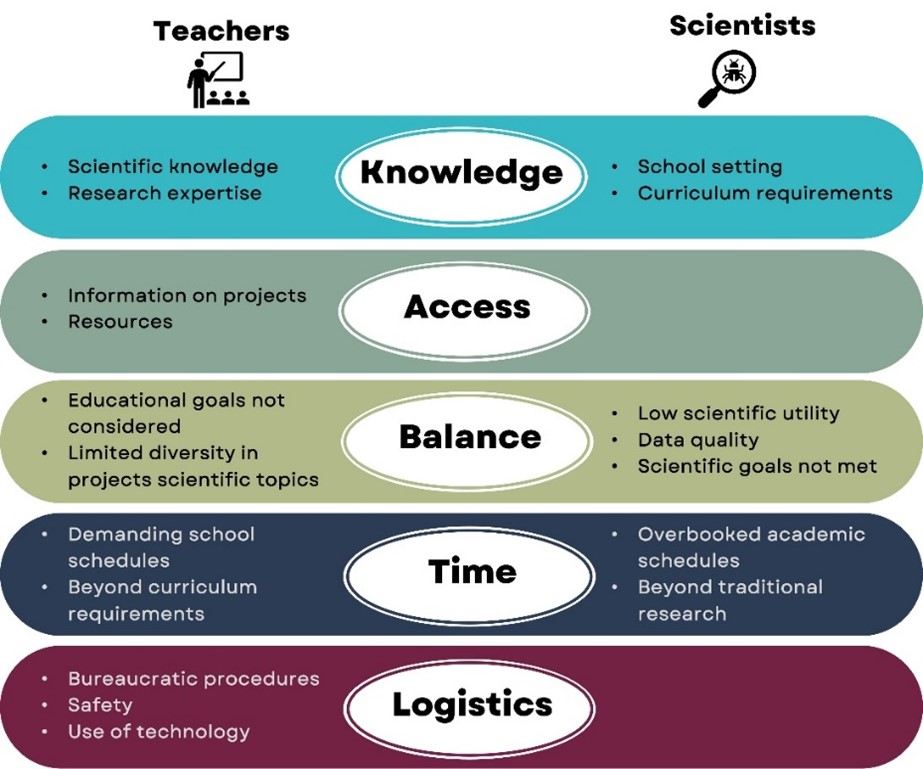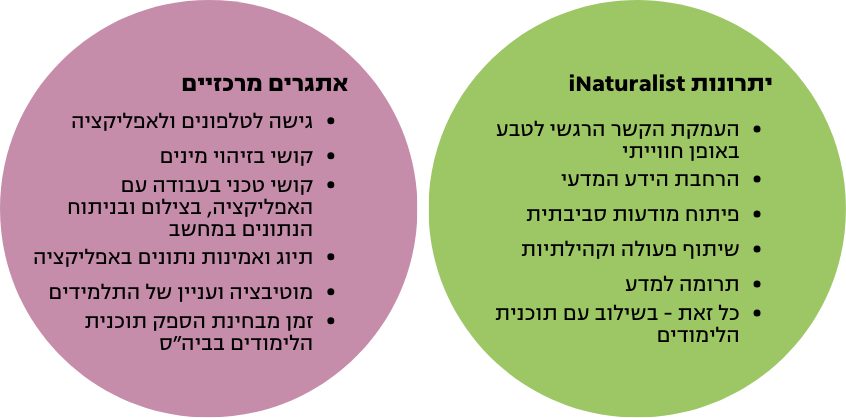Integrating Citizen Science into Educational Routines

Citizen science offers many benefits to the formal education system, including improving teaching processes, enriching the learning experience, and strengthening students’ connection to scientific knowledge. Despite the rapid growth of citizen science in advancing scientific research, integrating it into formal education faces challenges related to curriculum alignment, time constraints, accessibility, and logistics. This series of studies on integrating citizen science into educational routines aims to explore the benefits and challenges of using citizen science as an educational tool and to develop practical solutions for teachers and supporting researchers.
Challenges and Opportunities from the Perspectives of Teachers and Project Leaders
This conceptual study examines the challenges of integrating citizen science in schools from the perspective of teachers and citizen science project leaders. By understanding the real-world challenges, the study proposes a framework to help integrate citizen science in a way that is more accessible and better suited to teachers’ needs. The proposed approach includes three key solutions: mediation, collaboration, and simplification. Mediation provides essential support and guidance for implementing projects in schools. Collaboration and co-creation allow for the adaptation of projects to educational and scientific needs. Simplification makes citizen science more accessible and tailored to curriculum constraints and school logistics. A combined implementation of these strategies can ease the burden on teachers who want to bring citizen science into their classrooms and make projects and educational resources more widely accessible, aiming to embed citizen science as a regular part of classroom practice.

Mapping Citizen Science for the National Curriculum
Mapping citizen science projects in Israel to the national curriculum aims to serve as a resource for teachers interested in bringing citizen science into their classrooms but lacking the necessary information or guidance to select suitable projects. By categorizing projects according to their curricular relevance, we offer teachers ways to incorporate citizen science activities throughout the school year, aligned with the goals and educational requirements of each subject area. This approach can enhance students’ learning experiences and increase their engagement with scientific research processes while strengthening the connection between curriculum content and contemporary ecological and environmental challenges.
Integrating iNaturalist into Schools
iNaturalist is a global app for collecting biodiversity data through public participation, allowing users to identify, document, and share observations of plant, animal, and other species. The observations uploaded by users support research in various fields, such as mapping species distributions, monitoring biodiversity changes, and tracking rare or endangered species. One of iNaturalist’s key educational benefits is that it promotes active learning and allows students to engage independently. It deepens students’ scientific and environmental knowledge, develops observational and research skills, and fosters a connection to nature.
This study focuses on the integration of iNaturalist into schools, aiming to identify effective ways to embed the app into educational settings. The approach includes developing innovative pedagogical methods that enable students to explore and identify species in natural environments, while reinforcing an authentic connection to nature. Alongside the educational advantages, the study also examines the challenges of using innovative technologies in the classroom and the extent to which digital tools can be integrated without compromising students’ direct experiences and authentic connection with nature.
Preliminary Findings
A discussion session held with teachers and instructors with an interest in citizen science and experience using the iNaturalist app explored how teachers use iNaturalist with students of different ages. The session raised important points related to participant age, student engagement, and the accessibility of the technology.

